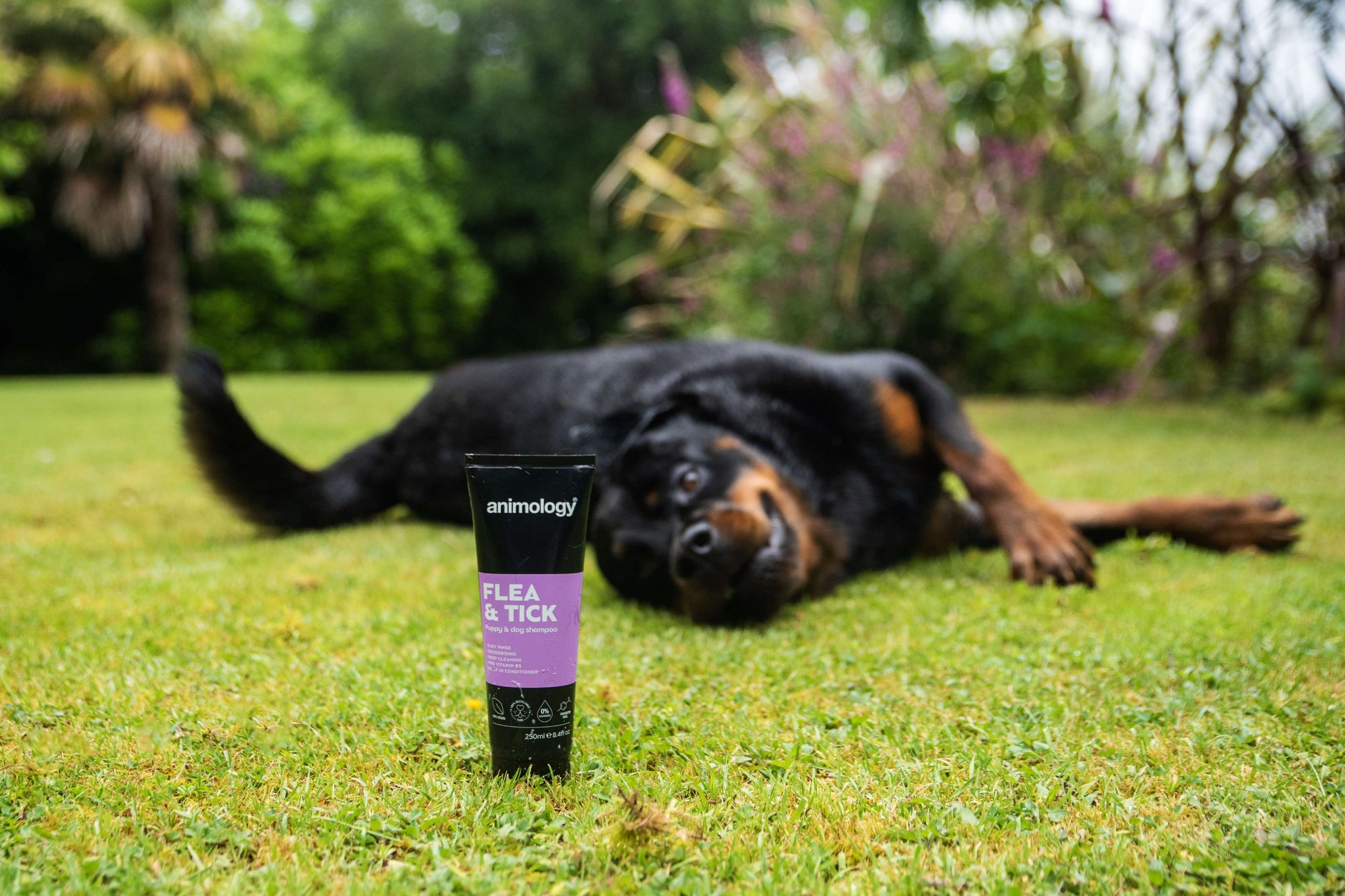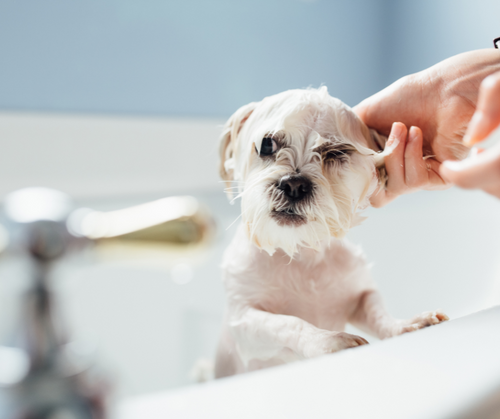Will giving my dog a bath kill fleas?

Fleas are an itchy subject that can affect most pet households at one point or another, and when they do they can be a bit of a nightmare to get rid of! One question we often hear is “Will giving my dog a bath kill fleas?” which has a bit of a complicated response… here goes!
Bathing your dog with fleas
If you discover your pet has fleas, giving them a bath is a great first step! This can be a really effective way of removing a large number of fleas that are on your pet, the water and soap can make an impact on killing the fleas, but the main benefit of a good bath is it reduces the fleas' ability to cling to your pets coat and skin making them much easier to remove. We’d recommend using a specially formulated flea & tick shampoo which is designed to soothe bitten skin whilst softening the fur to aid the removal of fleas. Bathe your dog in warm water and apply a generous amount of shampoo and really massage this deep into their fur and skin to get a good distribution of suds throughout their coat. Brush through their fur with a brush or flea comb to help remove adult fleas from their fur and watch them wash down the drain! Continue to rinse all the shampoo, debris and fleas out of their fur with water until the water runs clear. Dry your dog as you normally would and ensure you’ve got a treat to hand to reward them for being a good doggy!
So, you’ve made a dent in your flea problem, but to answer the original question - giving your dog a bath will help remove adult fleas, but it will not take care of your flea problem alone - we’ve got their eggs to think about too.
What you need to know about fleas
Adult female fleas can lay up to 50 eggs a day, so by the time you spot fleas on your pet, chances are they’ve taken the chance to breed! The flea lifecycle stage starts as an egg, these eggs then hatch into larvae, the larvae form into pupae and the pupae then become adult fleas - so to get rid of your infestation, you need to kill the fleas in all life stages, not just take care of the adult ones you see on your pet.
Further to that, did you know that the fleas on your pet only account for 5% of your infestation? 95% of the problem will be in your home on soft furnishings like carpets, your dog’s bedding and any soft warm areas your dog spends time on (which might include your sofa or bed, yikes!)
The other steps you need to take
Now that your dog is clean and many adult fleas are removed from their coat, you need to treat your pet for any remaining fleas, larvae or pupae on their body. There are many fast-acting flea treatments out there, we’d recommend speaking with your vet as they’ll be able to prescribe the best option and dosage for your dog knowing their health history and weight. If this isn’t a suitable option for you, there are many off-the-shelf solutions available in supermarkets and pet stores, these come in many formats such as spot-on treatments and tablets, make sure you read all instructions and administer the correct dosage for your dog’s weight.
So, that’s the dog taken care of, now your home! Vacuum your house thoroughly and dispose of the contents of your vacuum in your outdoor bin immediately - you don’t want to keep those pesky pests in the house! Make sure to wash all of your pet's bedding and any other washable soft furnishings on a cycle at a temperature higher than 40°C as this will kill fleas at all life stages.
You can also buy flea-killing products for the home such as sprays, foggers and powders that can support killing fleas in the home in spaces that you’re not easily able to wash. It’s important to read the instructions to administer these safely and always ensure you and your pets stay out of the environment for the time stated in the instructions.
You’re able to continue to bathe your dog regularly whilst you get rid of your infestation to help keep their skin smoothed and continue to remove any live (or dead) fleas from their coat. Just be sure to check the instructions of the flea treatment you’ve administered as some advise not to bathe 2-3 days after administering.
Once you’ve eliminated your infestation, it’s worth implementing a regular flea protection and prevention regime to ensure you don’t get hit with an infestation again!
Last Articles

December 05, 2022
How to introduce your puppy to baths
The world for a puppy is super exciting and chock full of new experiences! As new puppy owners, it’s...

September 27, 2021
Mythbusters - Your Dog's Diet
Canine nutrition hasn't quite become as laden with diet fads as for humans but there are a number of...

September 27, 2021
4 Tech Trends for Pet Parents
Technology is everywhere. Think of all the gadgets you use everyday. From your iPhone, to the GPS in...

September 27, 2021
5 top tips for preventing fleas
The summer months are great for long walks in the countryside with your dogs, enjoying the fresh air...

